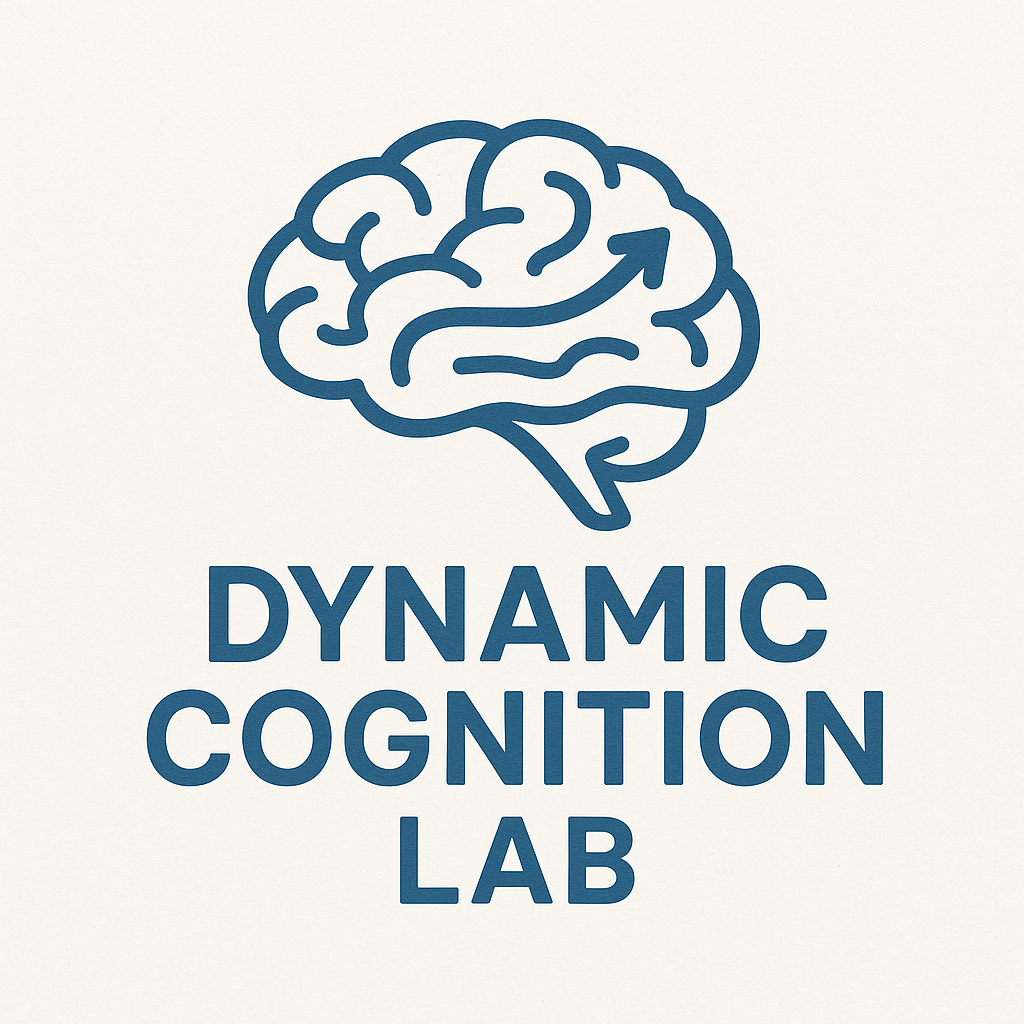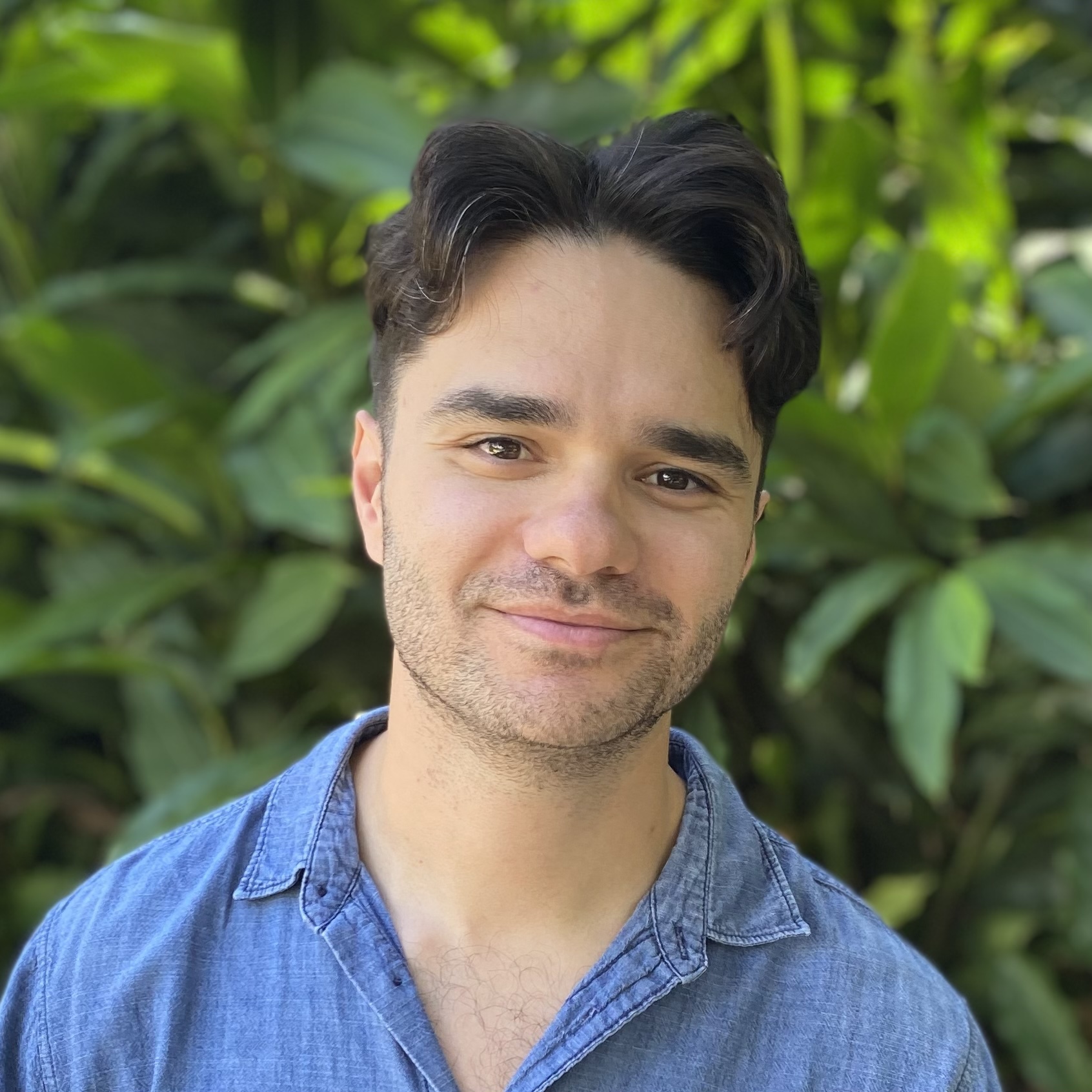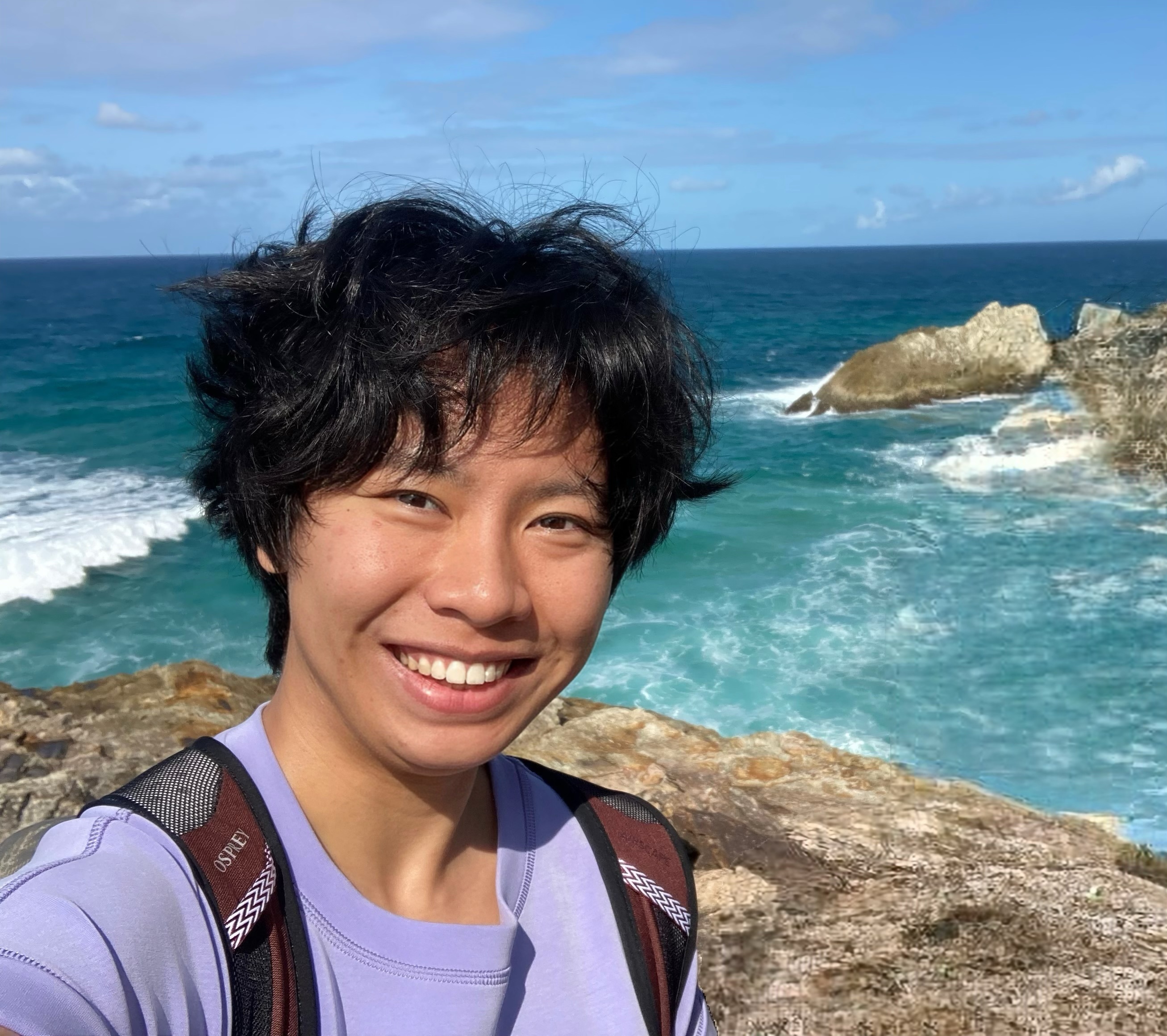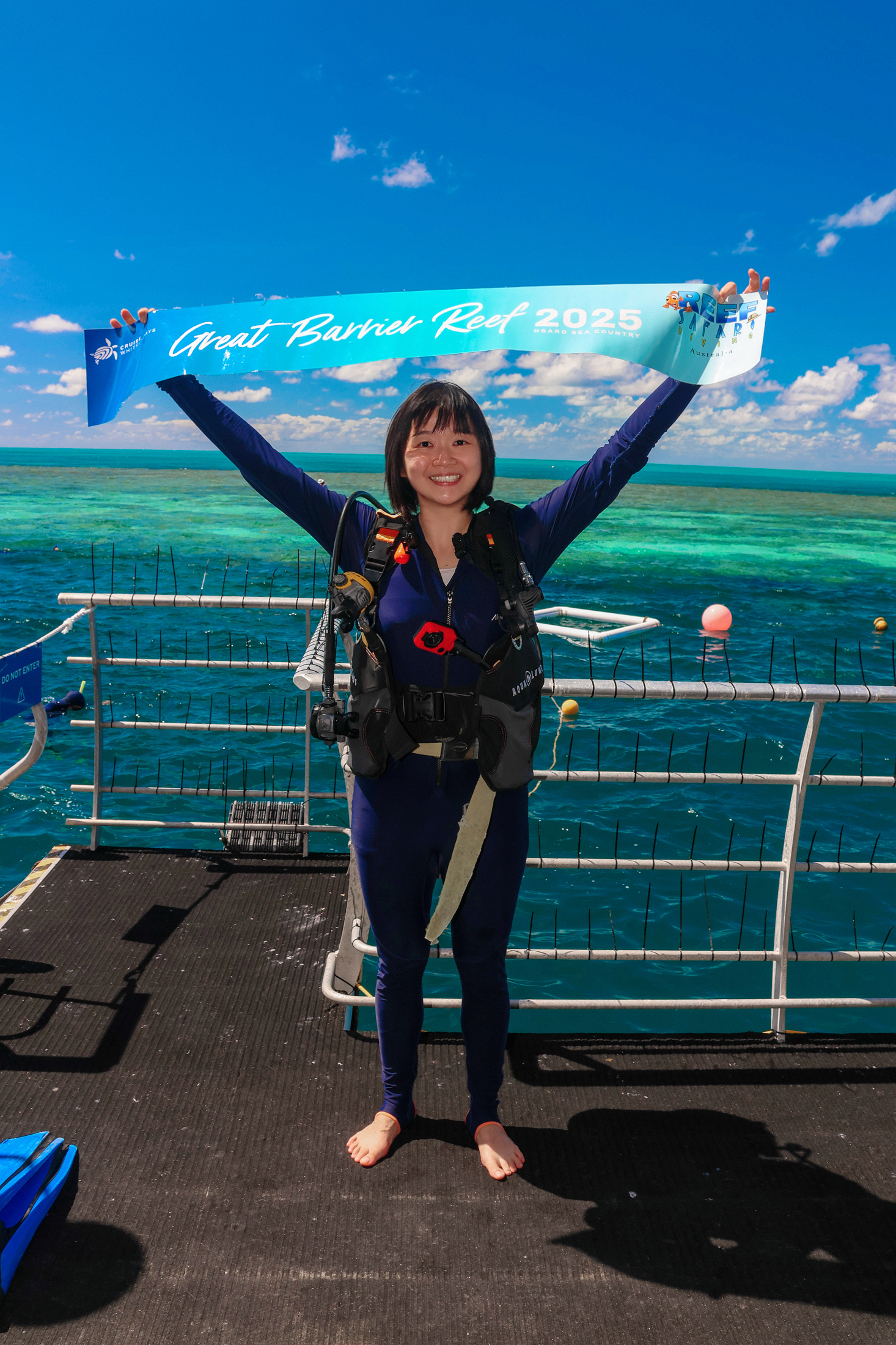
Understanding the Dynamic Brain
The lab of Amanda Robinson at the School of Psychology, University of Queensland. Exploring how the human brain processes visual information, recognises faces and objects, and represents the world around us through cutting-edge neuroscience research.
Explore Our ResearchOur Research
The Dynamic Cognition Lab investigates the neural mechanisms underlying visual perception, face and object recognition, and the dynamic representation of information in the human brain using advanced neuroimaging techniques and computational approaches.
Visual Object Recognition
We study how the brain rapidly processes and recognises visual objects, investigating the temporal dynamics of object representation using EEG and advanced decoding techniques to understand the neural mechanisms of visual perception.
Linking Brain to Behaviour
We investigate how neural representations and brain dynamics translate into behavioral outcomes, examining the relationship between neural activity patterns and cognitive performance in visual tasks and decision-making processes.
Neural Decoding & Brain Dynamics
Using multivariate pattern analysis (MVPA) and machine learning approaches, we decode neural signals to understand how information is represented and transformed in the brain across different time scales and brain regions.
Hemispheric Communication
We investigate how the left and right hemispheres of the brain communicate and coordinate during visual processing, particularly in object recognition tasks and peripheral vision processing.
Multisensory Integration
Our work examines how different sensory modalities (vision, olfaction, audition) interact and influence each other, including how odors can enhance visual processing and attention.
Visual Imagery & Mental Representation
We explore the neural basis of visual imagery and how imagined visual content is represented in the brain, comparing neural patterns between real perception and mental imagery.
Lab Publications
Selected recent publications from the Dynamic Cognition Lab
Rotation-tolerant representations elucidate the time-course of high-level object processing
PsyArXiv
PDFExpectation dynamically modifies the representational time course of objects and locations
Imaging Neuroscience, In press
PDFIncreased susceptibility to the face pareidolia illusion in Visual Snow syndrome
Perception, In press
DOI: 10.1177/03010066251387849
PDFNeural correlates reveal separate stages of spontaneous face perception
Communications Psychology, 2025
DOI: 10.1038/s44271-025-00308-4
PDFOne object with two identities: The rapid detection of face pareidolia in face and food detection tasks
Journal of Experimental Psychology: Human Perception and Performance, 2025
PDFDynamics of visual object coding within and across the hemispheres: Objects in the periphery
Science Advances, 2025
PDFInverted encoding of neural responses to audiovisual stimuli reveals super-additive multisensory enhancement
eLife, 2024
PDFExpectation modifies the representational fidelity of complex visual objects
Imaging Neuroscience, 2024
PDFMapping the dynamics of visual feature coding: Insights into perception and integration
PLOS Computational Biology, 2024
DOI: 10.1371/journal.pcbi.1011760
PDFProperties of imagined experience across visual, auditory, and other sensory modalities
Consciousness and Cognition, 2024
DOI: 10.1016/j.concog.2023.103598
PDFModelling perception as a hierarchical competition differentiates imagined, veridical, and hallucinated percepts
Neuroscience of Consciousness, 2023
PDFVisual representations: Insights from neural decoding
Annual Review of Vision Science, 2023
DOI: 10.1146/annurev-vision-100120-025301
PDFCapacity for movement is an organisational principle in object representations
NeuroImage, 2022
DOI: 10.1016/j.neuroimage.2022.119517
PDFAre you for real? Decoding realistic AI-generated faces from neural activity
Vision Research, 2022
DOI: 10.1016/j.visres.2022.108079
PDFThe time course of feature-based attention effects dissociated from temporal expectation and target-related processes
Scientific Reports, 2022
DOI: 10.1038/s41598-022-10687-x
PDFLinking the brain with behaviour: the neural dynamics of success and failure in goal-directed behaviour
Journal of Cognitive Neuroscience, 2022
PDFHuman EEG recordings for 1,854 concepts presented in rapid serial visual presentation streams
Scientific Data, 2022
DOI: 10.1038/s41597-021-01102-7
PDFOverfitting the literature to one set of stimuli and data
Frontiers in Human Neuroscience, 2021
DOI: 10.3389/fnhum.2021.682661
PDFThe neural dynamics underlying prioritisation of task-relevant information
Neurons, Behavior, Data analysis and Theory, 2021
PDFOverlapping neural representations for the position of visible and imagined objects
Neurons, Behavior, Data analysis and Theory, 2021
PDFAn introduction to time-resolved decoding analysis for M/EEG
Book chapter in: The Cognitive Neurosciences, 6th edition, MIT Press, 2020
PDFThe influence of object-colour knowledge on emerging object representations in the brain
Journal of Neuroscience, 2020
DOI: 10.1523/JNEUROSCI.0158-20.2020
PDFUntangling featural and conceptual object representations
NeuroImage, 2019
DOI: 10.1016/j.neuroimage.2019.116083
PDFThe influence of image masking on object representations during rapid serial visual presentation
NeuroImage, 2019
DOI: 10.1016/j.neuroimage.2019.04.050
PDFThe representational dynamics of visual objects in rapid serial visual processing streams
NeuroImage, 2019
DOI: 10.1016/j.neuroimage.2018.12.046
PDFChallenges and Opportunities in Instrumentation and Use of High-Density EEG for Underserved Regions
Book chapter in: Innovations and Interdisciplinary Solutions for Underserved Areas. InterSol 2018. Springer, 2018
DOI: 10.1007/978-3-319-98878-8_7
PDFDistinct neural processes for the perception of familiar and unfamiliar faces along the visual hierarchy revealed by EEG
NeuroImage, 2018
DOI: 10.1016/j.neuroimage.2018.06.080
PDFMore than action: The dorsal pathway contributes to the perception of 3D structure
Journal of Cognitive Neuroscience, 2018
PDFVery high density EEG elucidates spatiotemporal aspects of early visual processing
Scientific Reports, 2017
DOI: 10.1038/s41598-017-16377-3
PDFWord and face processing engage overlapping distributed networks: Evidence from RSVP and EEG investigations
Journal of Experimental Psychology: General, 2017
PDFOdours reduce the magnitude of object substitution masking for matching visual targets in females
Attention, Perception and Psychophysics, 2016
DOI: 10.3758/s13414-016-1157-9
PDFOlfaction modulates early neural responses to matching visual objects
Journal of Cognitive Neuroscience, 2015
PDFOdors enhance the salience of matching images during the attentional blink
Frontiers in Integrative Neuroscience, 2013
PDFOur Team
Meet the researchers advancing our understanding of dynamic cognition

Dr Amanda K. Robinson
UQ Amplify Lecturer
Specialising in visual perception, neural dynamics, and object processing. Leading research on the dynamic representation of visual information in the human brain.

Josef Ormsby
PhD Student
Supervisors: Dr Amanda Robinson (primary), Assoc Prof Jess Taubert, Assoc Prof Alan Pegna
Research Interests: Cognitive neuroscience, using neuroimaging and decoding to study how the hemispheres process emotional faces, with a broader interest in how hemispheric asymmetries shape perception, meaning, and creativity.

Zihe Wei
PhD Student
Supervisors: Associate professor Jess Taubert (primary), Associate professor Alan Pegna, Dr Amanda Robinson, Dr Blake Saurels
Research Interests: Face perception, rapid emotion recognition, EEG decoding

Ssuting Chen
PhD Student
Supervisors: Associate professor Jess Taubert (primary), Associate professor Alan Pegna, Dr Amanda Robinson
Research Interests: Visual perception and cognitive neuroscience, with a focus on how the brain processes local and global features. Grounded in Gestalt principles to investigate configural information processing and recognition.
Additional Team Members
PhD & Honours Students
We're proud to work with additional PhD students and Honours students on cutting-edge research projects in visual cognition and neural processing, contributing to our understanding of brain dynamics.
Join Our Team
We're always looking for passionate researchers to join our dynamic team. Opportunities available for PhD students, Honours students, and postdoctoral researchers.
Get in TouchMedia Coverage
Our research has been featured in various media outlets, highlighting the real-world impact of our findings
Research Impact
Our research has generated significant public interest and media attention, helping bridge the gap between academic neuroscience and public understanding of how the brain works. From understanding how we see faces in everyday objects to revealing how our brains can detect artificial faces, our findings have important implications for understanding human perception and cognition.
Media Enquiries
For media interviews, expert commentary, or information about our latest research findings, please contact:
Dr Amanda K. Robinson
a.robinson4@uq.edu.au
Television Coverage
"Seeing illusory faces in things"
Television coverage of our research on face pareidolia - the phenomenon where people see faces in everyday objects like clouds or electrical outlets.
"New findings about the human sense of smell"
International television report on our groundbreaking research into multisensory processing and olfaction.
Radio Interviews
ABC Radio Brisbane & ABC Radio Capricornia
Radio interviews discussing our latest findings on visual perception and face processing research.
"Odor preferences and memory"
Interview about our research on how smell influences visual processing and memory formation.
Online Science Media
"Neural signals uncover stages of spontaneous face perception"
Coverage of our latest research published in Communications Psychology on the neural mechanisms underlying face detection.
"Your brain is better at busting deep fakes than you"
Feature story about our research showing how the brain can detect AI-generated faces even when people consciously cannot.
Read full article →"Advances to brain-interface technology provide clearer insight into visual system"
Coverage of our high-density EEG research and its implications for understanding early visual processing.
Read full article →"Smell stimulates early visual processing in women but not in men"
Feature highlighting our findings on sex differences in multisensory processing between olfaction and vision.
Read full article →Contact Us
Get in touch to learn more about our research or explore collaboration opportunities
Principal Investigator

Dr Amanda K. Robinson
UQ Amplify Lecturer
School of Psychology
Email: a.robinson4@uq.edu.au
Location
School of Psychology
The University of Queensland
St Lucia, QLD 4072
Australia
Research Opportunities
We welcome inquiries from:
• Prospective PhD students
• Honours students
• Postdoctoral researchers
• Potential collaborators
University of Queensland
The University of Queensland is a world-class research institution committed to advancing knowledge and understanding through excellence in research and education.
Visit UQ Website